|
Books Should Be Free Loyal Books Free Public Domain Audiobooks & eBook Downloads |
|
|
Books Should Be Free Loyal Books Free Public Domain Audiobooks & eBook Downloads |
|
Historical Fiction |
|---|
|
Book type:
Sort by:
View by:
|
By: Sir Walter Scott (1771-1832) | |
|---|---|
 Pirate
Pirate
The Pirate is set in the island of Shetland in the late 1600s, and is a historical novel based on the life of John Gow, Captain Cleveland in the novel. - Summary by Deon Gines | |
By: Stephen Crane (1871-1900) | |
|---|---|
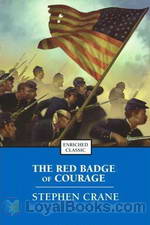 The Red Badge of Courage
The Red Badge of Courage
The Red Badge of Courage is a fiction that tells the story of a soldier named Henry Fleming during the American Civil War. The novel gained widespread praise from critics and was also a commercial success shortly after its release and made Stephen Crane an instant celebrity at the young age of 24. In the novel, Henry was one of the enlisted soldiers in the 304th New York Regiment. He flees from battle in one of the skirmishes they had against the Confederates and to hide his cowardice, he attempted to inflict a wound to himself which is referred to as the “red badge of courage... | |
By: Stewart Edward White (1873-1946) | |
|---|---|
 The Blazed Trail
The Blazed Trail
Stewart Edward White wrote fiction and non-fiction about adventure and travel, with an emphasis on natural history and outdoor living. White's books were popular at a time when America was losing its vanishing wilderness and many are based on his experiences in mining and lumber camps. The Blazed Trail is the story of early lumbermen in the northern woods of Michigan. The novel portrays the challenges faced by the workers focusing on one, Harry Thorpe, as he endeavors to be successful though completely unskilled when he enters the woods... | |
By: Susan Edmonstoune Ferrier | |
|---|---|
 Marriage, Volume 1
Marriage, Volume 1
“Love!–A word by superstition thought a God; by use turned to an humour; by self-will made a flattering madness.” – Alexander and Campaspe. Lady Juliana, the indulged and coddled seventeen (”And a half, papa”) year old daughter of the Earl of Cortland, is betrothed by her father to a wealthy old Duke who can give her every luxury. She instead runs away and marries her very handsome but penniless lover. Very soon, they are forced to travel to Scotland to live with his quirky family in a rundown “castle” in the barren wilderness. Can this marriage survive?(Summary by P.Cunningham) | |
 Inheritance
Inheritance
"As the noblest attribute of man, family pride had been cherished time immemorial by the noble race of Rossville. Deep and incurable, therefore, was the wound inflicted on all its members by the marriage of the honorable Thomas St. Clair, the youngest son of the Earl of Rossville, with the humble Miss Sarah Black, a beautiful girl of obscure origin and no fortune." And so the stage is set for our plot, which focuses on the implications and complications of the return from France to Scotland of the Rossville widow and her daughter-heiress Gertrude, who must suffer the onslaught of relations and suitors as well as a mysterious, threatening stranger who plagues her mother... | |
By: Susan Petigru King-Bowen (1824-1875) | |
|---|---|
 Actress in High Life: An Episode in Winter Quarters
Actress in High Life: An Episode in Winter Quarters
1812 is the year and Portugal the location for this adventure. The characters for the most part are British officers. Lord Strathern sends for his daughter Lady Mabel Stewart presently in Scotland to join him in Elvas where he has stationed his brigade for the winter. The debonair Colonel l'Lisle is the hero of our story. The author provides a vivid look into the landscape, history and people of this era and often touches on liturgy...sometimes controversial among the characters. Very informative it is more travelogue than romance however. Enjoy!! | |
By: Sutton Griggs (1872-1933) | |
|---|---|
 Imperium in Imperio: A Study of the Negro Race Problem
Imperium in Imperio: A Study of the Negro Race Problem
Imperium in Imperio is a historical fiction novel by Sutton Griggs, published in 1899. The novel covers the life of Belton Piedmont, an educated and disciplined black man in the Jim Crow south and his role in a shadow government of black men operated out of a college in Waco, Texas. | |
By: Théophile Gautier (1811-1872) | |
|---|---|
 Romance of a Mummy and Egypt
Romance of a Mummy and Egypt
MANUAL OF SURGERY, OXFORD MEDICAL PUBLICATIONSBY ALEXIS THOMSON, F.R.C.S.Ed.PREFACE TO SIXTH EDITION Much has happened since this Manual was last revised, and many surgical lessons have been learned in the hard school of war. Some may yet have to be unlearned, and others have but little bearing on the problems presented to the civilian surgeon. Save in its broadest principles, the surgery of warfare is a thing apart from the general surgery of civil life, and the exhaustive literature now available on every aspect of it makes it unnecessary that it should receive detailed consideration in a manual for students... | |
By: Thomas Dixon, Jr. (1864-1946) | |
|---|---|
 Clansman, An Historical Romance of the Ku Klux Klan
Clansman, An Historical Romance of the Ku Klux Klan
The second book in a trilogy of the Reconstruction era - The Leopard's Spots (1902), The Clansman (1905), and The Traitor (1907), this novel was the basis for the 1915 silent movie classic, "The Birth Of A Nation". Within a fictional story, it records Dixon's understanding of the origins of the first Ku Klux Klan (his uncle was a Grand Titan during Dixon's childhood), recounting why white southerners' began staging vigilante responses to the savage personal insults, political injustices and social cruelties heaped upon them during Reconstruction... | |
 Leopard's Spots
Leopard's Spots
The first in a trilogy of the Reconstruction era - The Leopard's Spots (1902), The Clansman (1905), and The Traitor (1907), parts of this novel were incorporated in the 1915 silent movie classic, "The Birth Of A Nation". Set in North Carolina, the book explores the extreme social and racial tensions of the period as Confederates attempt to fight off "reconstructionist" policy, rebuild the war-torn South's economy, and grapple with the rampant "race question" of the day, whether the black and white races can ever live side by side as equals, i... | |
 Traitor
Traitor
Dixon lived through Reconstruction, and believed it ranked with the French Revolution in brutality and criminal acts. The Traitor (1907), the final book in his trilogy which also includes The Leopard’s Spots (1902), and The Clansman (1905), spans a two-year period just after Reconstruction (1870-1872), and covers the decline of the Ku Klux Klan in North Carolina. Dixon, whose father was an early Klan leader, maintained that the original Klan, the “reconstruction Klan” was morally formed in desperation to protect the people from lawlessness, address Yankee brutality, and save southern civilization... | |
By: Thomas Hardy (1840-1928) | |
|---|---|
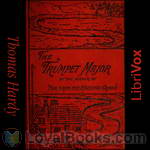 The Trumpet-Major
The Trumpet-Major
Our heroine, Anne Garland, lives quietly in a rural community deep in the English countryside. However, the arrival of several regiments preparing for an expected invasion brings colour and chaos to the county. A graceful and charming young woman, Anne is pursued by three suitors: John Loveday, the trumpet-major in a British regiment, honest and loyal; his brother Robert, a merchant seaman and womaniser, and Festus Derriman, the cowardly son of the local squire. Set at the time of the Napoleonic wars, this is the author’s only historical novel, and unusually for Hardy’s stories, most of the characters live happily ever after. | |
 Group of Noble Dames
Group of Noble Dames
The pedigrees of our county families, arranged in diagrams on the pages of county histories, mostly appear at first sight to be as barren of any touch of nature as a table of logarithms. But given a clue—the faintest tradition of what went on behind the scenes, and this dryness as of dust may be transformed into a palpitating drama. Out of such pedigrees and supplementary material most of the following stories have arisen and taken shape. | |
By: Thomas Wallace Knox (1835-1896) | |
|---|---|
 Captain John Crane, 1800 - 1815
Captain John Crane, 1800 - 1815
John and David grew up best of friends, outgoing and full of adventure. Living but miles from the sea west of Boston, right on the cusp of manhood at the end of America’s Revolutionary war, the ocean’s siren song beckoned to both. At the peak of adolescence, they struck out on foot in pursuit of their shared dream. Two days to Boston and only one day there found them aboard ship for a whirlwind of adventure beyond their wildest dreams. The next fifteen years shaped a future for the fledgling mariners that seems spun as a flaxen yarn --- were it not so historically accurate. - Summary by Tom Hirsch | |
By: Torquato Tasso (1544-1595) | |
|---|---|
 Jerusalem Delivered
Jerusalem Delivered
The First Crusade provides the backdrop for a rich tapestry of political machinations, military conflicts, martial rivalries, and love stories, some of which are complicated by differences in religion. The supernatural plays a major role in the action. Partly on this account, and partly because of the multilayered, intertwined plots, the poem met with considerable contemporary criticism, so Tasso revised it radically and published the revision under a new name, La Gerusalemme Conquistata, or "Jerusalem Conquered," which has remained virtually unread, a warning to authors who pay attention to the critics... | |
By: Trollope, Anthony (1815-1882) | |
|---|---|
 Belton Estate, The
Belton Estate, The
Clara Amedroz is the virtuous, intelligent, and quick-witted heroine of this novel. Like all women of her time, she has few options other than to marry. She is lucky enough to have two eligible suitors, and chooses the more urbane and worldly of the two. Alas, however, she realizes fairly quickly that Captain Aylmer is not a nice person. Throughout much of the novel we find her trying hard not to recognize that Will Belton - the suitor she rejected, and who still loves and wants to marry her - is... | |
By: Upton Sinclair (1878-1968) | |
|---|---|
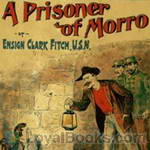 A Prisoner of Morro
A Prisoner of Morro
Upton Sinclair, born in 1878 was a Pulitzer Prize-winning American author. He wrote over 90 books in many genres. Best known for his muckraking novel, The Jungle, Sinclair also wrote adventure fiction. Many of these works were written under the pseudonym, Ensign Clark Fitch, U.S.N. A Prisoner of Morrow, published in 1898 when Sinclair was but 20 years old, is one of these efforts. The period for this work is the ten-week Spanish–American War which occurred in 1898. Revolts against Spanish rule had been prevalent for decades in Cuba and were closely watched by Americans... | |
By: Vicente Blasco Ibáñez (1867-1928) | |
|---|---|
 Four Horsemen of the Apocalypse
Four Horsemen of the Apocalypse
The Four Horsemen of the Apocalypse, by Vicente Blasco Ibañez and translated into English by Charlotte Brewster Jordan, depicts two branches of a family with its roots in the pampas of Argentina. The wealthy Argentinian, Julio Madariaga, comes from Spain and raises himself from poverty, becoming a self-made, wealthy cattleman. He is a man of extremes; an honest man with a rascally knack for taking advantage of others; a self-made man with overweening pride, prejudices, and a sharp, flinty temper that can spark into violence, he is at the same time given to great generosity toward those who are under him... | |
By: Victor Hugo (1802-1885) | |
|---|---|
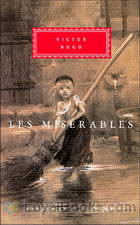 Les Misérables
Les Misérables
Victor Hugo's Les Misérables is a novel which tells the story of ex-convict Jean Valjean, his struggles and eventual redemption. It's hailed by many critics as not just Victor Hugo's finest work but also one of the best French novels of all time. Like most epic novels written in the 19th century, the storyline of Les Misérables spans through several decades beginning in the early 1800s and culminating in the 1832 June Rebellion in Paris. The events related to the lives of the central characters in the novel are also tied to the great historical events of the time from the French Revolution to the June Rebellion... | |
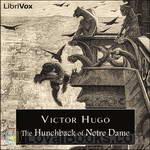 The Hunchback of Notre Dame
The Hunchback of Notre Dame
One of the great literary tragedies of all time, The Hunchback of Notre Dame features some of the most well-known characters in all of fiction - Quasimodo, the hideously deformed bellringer of Notre-Dame de Paris, his master the evil priest Claude Frollo, and Esmeralda, the beautiful gypsy condemned for a crime she did not commit. | |
 Hans of Iceland
Hans of Iceland
Hans of Iceland was written in 1821 and is the very first novel written by young Victor, years before he became the great Hugo. It has all the ingredients of a gothic novel: dreadful murders by the hand of a human monster, a young hero in love with the destitute heroine, royal court-intrigues and rebellious uprising, all set in dungeons, dark towers and the untamed nature of Norway.This audio-book has been recorded as Dramatic Reading with all the voices performed by one single reader, including laughs, sobs, groans, occasional screams and a lot of growls. I hope you will enjoy listening to this adventurous journey just as much as I enjoyed recording it. - Summary by Sonia | |
 Ninety-Three
Ninety-Three
1793. The new revolutionary government of France is laboring mightily to end injustice and bring in an ideal new age of liberty, equality, and brotherhood, beginning by killing those obnoxious persons who don't appreciate their ideals. In Vendée a force of peasants, strongly supported by imperial England, is laboring mightily to overthrow the revolutionary government and restore Christianity, family, honor and decency, beginning by killing those obnoxious persons who fail to appreciate those noble phenomena... | |
By: Violet Jacob (1863-1946) | |
|---|---|
 Flemington
Flemington
This adventure historical fiction novel is set in Angus, Scotland during the Jacobite rebellion of 1745. It has all the elements of a good war novel: spies, betrayals, politics, and even a love story . This is a smart novel with wise insights into human nature, the different choices people make during a conflict, and the coping mechanisms of those who were left behind. This novel will make you laugh, cry, and fall in love with the landscape of Scotland. - Summary by Stav Nisser. | |
By: Voltaire (1694-1778) | |
|---|---|
 Zadig or The Book of Fate (Version 2)
Zadig or The Book of Fate (Version 2)
"there is no Evil under the Sun, but some Good proceeds from it:" -- this quote from this novel sums it up. One of Voltaire's most celebrated works, Zagig follows the plight of a young man, Zadig, as he embarks on matrimony. This tale is somewhat philosophical, suggesting that no matter how we act, we are confronted by bigotry, injustice and betrayal. Although set in Babylon, there is no attempt at historical accuracy. | |
By: Walter Pater (1839-1896) | |
|---|---|
 Marius the Epicurean
Marius the Epicurean
Marius the Epicurean is a philosophical novel written by Walter Pater, published in 1885. In it Pater displays, with fullness and elaboration, his ideal of the aesthetic life, his cult of beauty as opposed to bare asceticism, and his theory of the stimulating effect of the pursuit of beauty as an ideal of its own. The principles of what would be known as the Aesthetic movement were partly traceable to this book; and its impact was particularly felt on one of the movement’s leading proponents, Oscar Wilde, a former student of Pater at Oxford. | |
By: Walter Savage Landor (1775-1864) | |
|---|---|
 Imaginary Conversations (Dramatic Reading)
Imaginary Conversations (Dramatic Reading)
This is a group of Imaginary Conversations by Walter Savage Landor. It is a series of dialogues of historical and mythical characters. Marcellus and Hannibal, Queen Elizabeth and Cecil, Peter the Great and Alexis, Louis XIV and Father La Chaise, Henry VIII and Anne Boleyn are just a few of the delights on offer. Plenty to choose from and some great reads. - Summary by Michele Eaton Cast List: Landor: pjmorgan Marcellus: SirQueezle Hannibal: bala The Surgeon: CharlieOldfield Gaulish... | |
By: Warwick Deeping (1877-1950) | |
|---|---|
 Uther and Igraine
Uther and Igraine
This beautifully written book imagines the lives of Igraine and Uther Pendragon before the legend of Arthur began. | |
By: Washington Irving (1783-1859) | |
|---|---|
 Old Christmas: From the Sketch Book of Washington Irving
Old Christmas: From the Sketch Book of Washington Irving
Washington Irving's Old Christmas tells of an American's travels through England during the Christmas season. Through a chance meeting with an old friend he is able to experience Christmas in a stately manor house. Through his eyes as a houseguest he glimpses the uniquely British customs and celebrations of Christmas as it would have been experienced during the Middle Ages, rather than in the early 19th century. | |
By: Willa Cather (1873-1947) | |
|---|---|
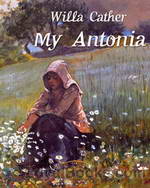 My Antonia
My Antonia
Two young children arrive in a small frontier settlement on the wild and desolate plains of Nebraska, on the same day and by the same train. Jim Burden is a ten year old orphan from Virginia who has come to live with his grandparents, while Antonia Shimerda who's the same age as Jim, arrives with her large, immigrant family from Eastern Europe to try and eke out a living in the New World. The children find themselves thrown together as they live in adjoining farms. Jim tutors Antonia in English and they become good friends as they grow up... | |
By: William Platt | |
|---|---|
 Stories of the Scottish Border
Stories of the Scottish Border
Nothing seems to be known about Mr and Mrs William Platt, the writers of Stories of the Scottish Border. What they produced is an eccentric guidebook and history, seen partly through the ballads of the region. The book recounts the military stratagems, treachery and courage of those who struggled for control of the Border lands and of the whole country, and tells of the triumphs or tragic fate of those who took part on both sides. It also tells us stories of the Border Reivers, raiders who lived by riding out and stealing their neighbours’ livestock... | |
By: William Carleton (1794-1869) | |
|---|---|
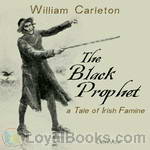 The Black Prophet - A Tale of Irish Famine
The Black Prophet - A Tale of Irish Famine
A story about the Irish, just before the onset of the famine of 1847, with all the color and dialogue of a man who lived it. | |
By: William Dean Howells (1837-1920) | |
|---|---|
 Indian Summer
Indian Summer
In his novel Indian Summer, William Dean Howells presents a mellow but realistic story that has the complete feel of that delightful time of the year, although the plot actually spans several seasons. The Indian summer aspect applies to a sophisticated gentleman, Theodore Colville, who has just entered his middle years as he returns to a scene, Florence, Italy, that played an important part in his early manhood. It was here twenty years earlier that he first fell in love, seemingly successfully until a sudden and harsh rejection... | |